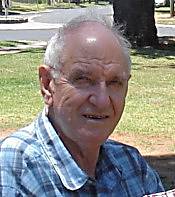
|
The world of non-commercial film and A-V |
Events Diary | Search | ||
| The Film and Video Institute | | ||||
|
The Videomaker's
Journey: |
The Learning Process - by Arthur Bullock
 |
I learned the value of being a team player a long time ago. I am
also a student of human behaviour. My last job was terrific: I was
the Supervising Draftsman in a consulting engineers office for the
water supply works. My boss trained me how to do a large amount of
the engineers' work on water treatment plant plans, such as
hydraulic calculations for pipe-work and his special requirements
for designing the pipe layout at the pumps and the other minor
works. I taught myself how to design the floodlighting.
I used to be a worrier, that was cured a long time ago. I have a wonderful family - my wife and 5 daughters all have a mad sense of humour and give me heaps - but they are all nice to me. Over the last 10 years - I have written technical articles for a local movie making club. I have given special consideration to making it easy for beginners to get started. The Moviemaking Clubs in Australia were permitted to re-publish my articles in their newsletters and several did so. A New Zealand club even published some extracts. |
Some tasks will be set out in the course. You need to look back on your previous efforts - then work on improving your methods. Joining a movie making club is a good way to find people who can give constructive criticism. If possible find a club that has a history of movie making. [Visit the IAC list of UK clubs.]
If you have old travel and family video shots - trim and adjust them with a simple edit operation - make DVD copies for easy viewing - and archive them for safe storage. At a later date, you can then edit them down to a series of short movies. If the old stuff is really bad - maybe you can convert it into a series of stills. If there are short clips that are not too bad - sometimes by converting the first and last frames of each clip into 3 second stills, they may become watchable. Examples of how to do this, will be shown in the course.
The audio level gauges in some editing software are not related to standard zero db audio. The audio level has to be set by ear - this seems to be typical of some of the computer systems used by most movie makers. This is not good enough - we have calibrated the audio level in my iMac -so that we can read the audio volume on an external audio level gauge, as we adjust the volume to the required level on each clip. How to do this will be shown in the course.
All of this tutorial is based on practical experience gained from making home movies.
Note that these articles were written for use in Australia. Comments in green have been added by the editors for British references.
TABLE OF CONTENTS
Click on the links below to read each chapter:
1. Introduction
|
11 Lighting
|
17 Editing for Beginners
|
© copyright Arthur Bullock, 2007-13
Share your passions.

Share your stories.